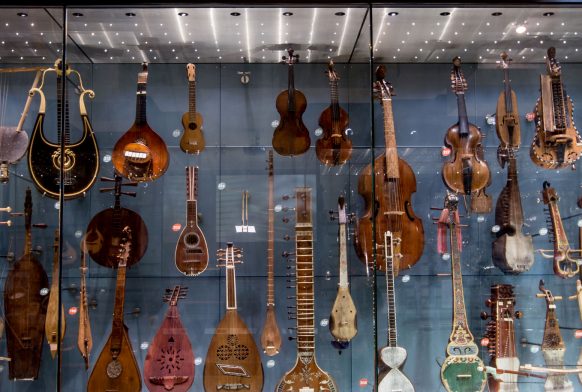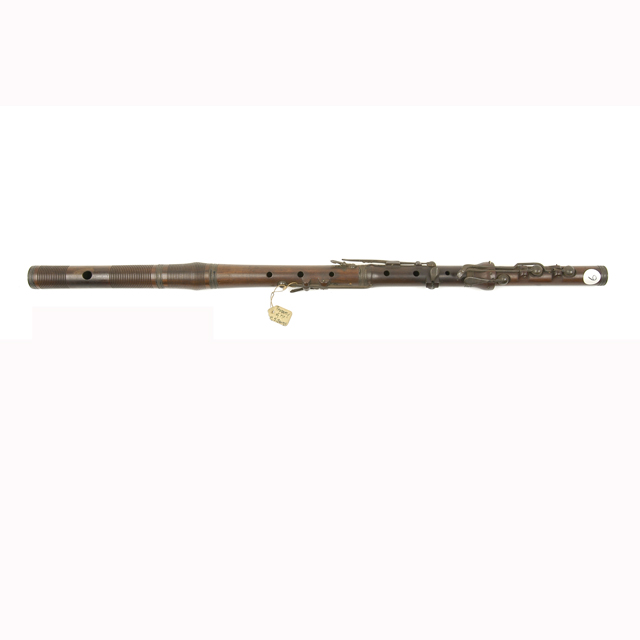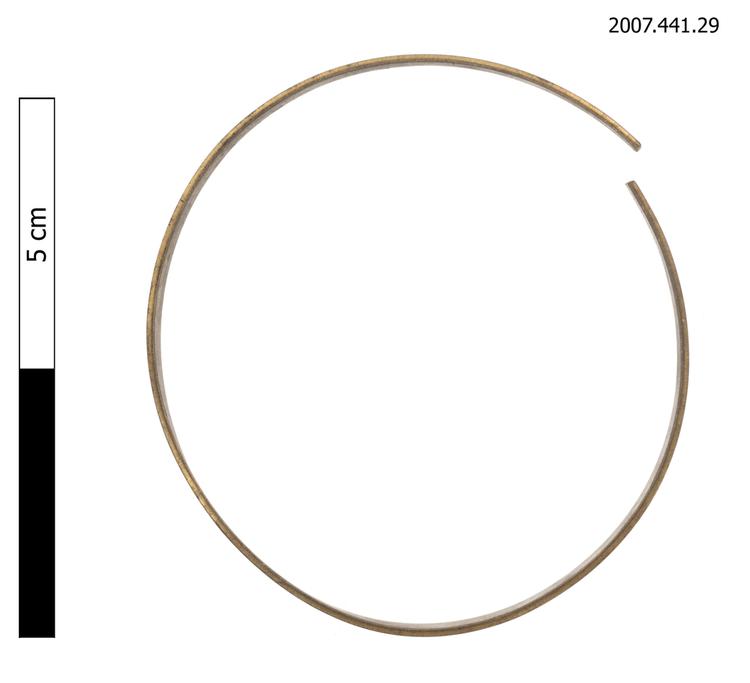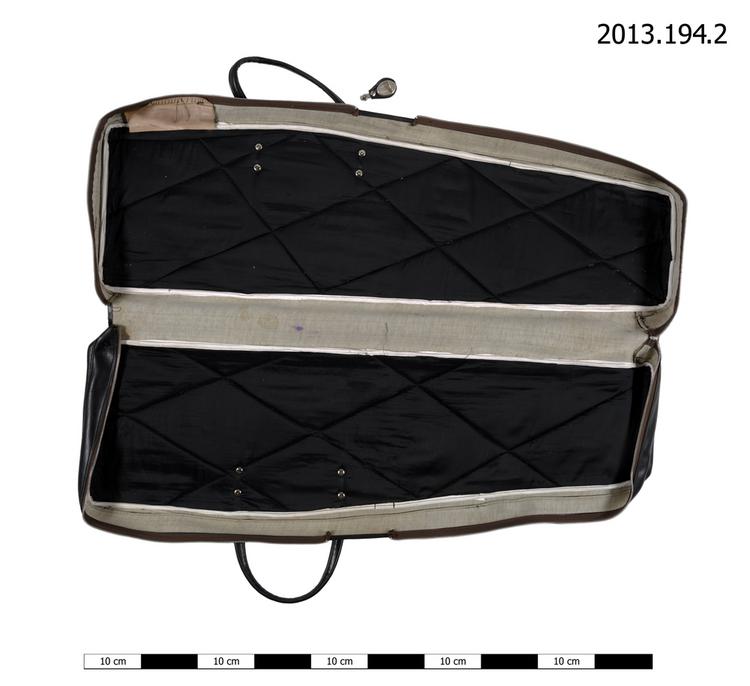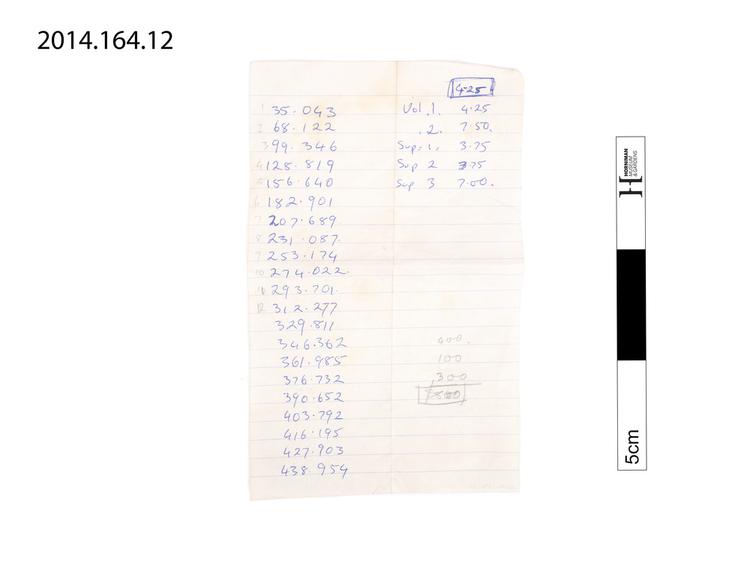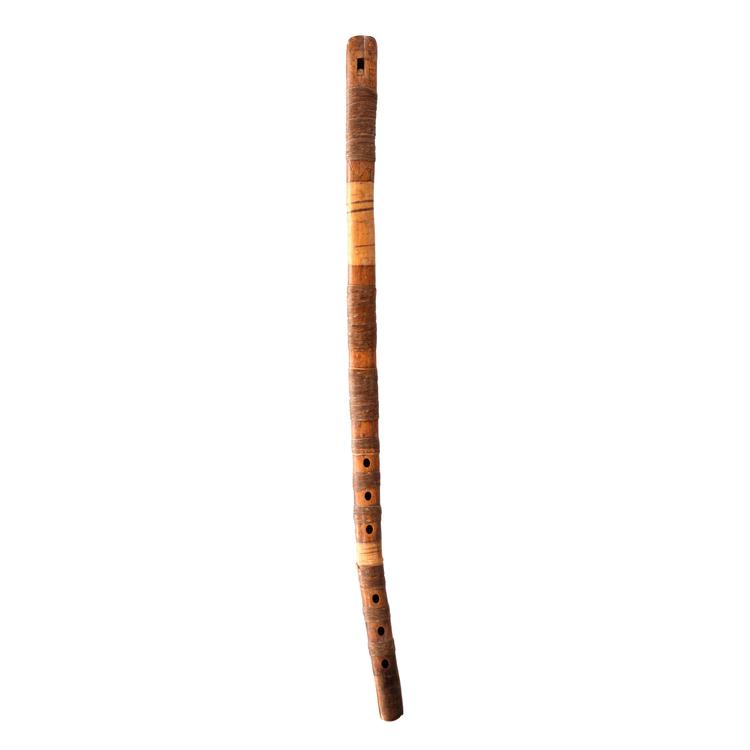
Saripalka pinkillu, duct flute. Block is missing. Body is a single piece of wood with a gradual conical taper away from the mouthpiece. The mouthpiece is angled towards the player and the distal end is angled to the player's left. Mouthpiece has a beak approx. 15 mm long. Window is rectangular and 26x9 mm. Six oval shaped finger holes approx 12x9 mm. Fingerholes arranged in two groups of three. Despite the apparently ergonomic arrangement of the fingerholes, it is not clear how these are reached by the fingers or how the player reaches both the both the mouthpiece and the fingerholes as the instrument is very long. Vegetable fibre bands are wrapped round the body in 9 places. The letters 'E:P' are insribed to the right side of the window and a geometric pattern including a Christian cross is inscribed on the front of the instrument below the top ferrule.
This saripalka was collected in 1987 by Henry Stobart during a research visit to the Potosi region of Southern Bolivia. Stobart suggests two possible derivations for the instrument's name, the first that it is named after a dance, the second that it is named after the village of Saripalka, near Toropalka in the Potosi region. The history of the village lends weight to this argument, as it was traditionally the place where the melodies for carnival were collected, with representatives from other villages visiting annually to learn the melodies for the coming celebrations. The saripalka is played with the malichu (M24f-1987 is an example of this instrument), both of which are duct flutes of similar design. The malichu is half the length of the saripalka and plays an octave higher, always playing the same line in parallel octaves. The saripalka and malichu are only played during the rainy season, between Christmas and carnival, and the instruments themselves must be wetted before use in order to function at their best.



